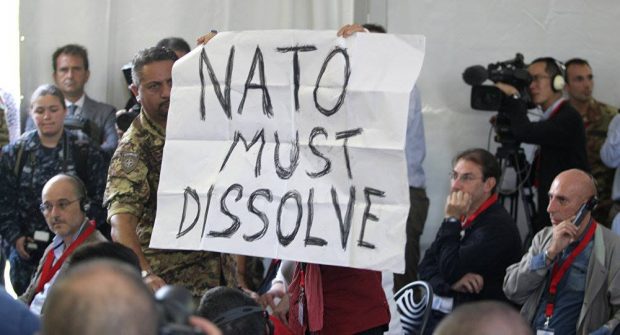
The wise men of the establishment are again telling us that hopes for lasting peace are a delusion. They declare that human nature makes it impossible, that war is built into our genes. They point to research by evolutionary biologists that indicates our closest genetic relatives, the chimpanzees, make war. Therefore war must be part of our heredity.
“We’ve always had wars,” they claim. “Humans are a warring species. Without a military to defend us, someone will always try to conquer us.” These assumptions have become axioms of our culture. They generate despair but also a certain comfort because they relieve us of the responsibility to change.
It’s true that in certain situations chimpanzees do raid neighboring colonies and kill other chimps. Those studies on killer apes got enormous publicity because they implied that war is hardwired into human nature. Most scientists didn’t draw those conclusions from the evidence, but the establishment media kept reinforcing that message.
Further research, however, led to a key discovery: The chimps who invaded their neighbors were suffering from shrinking territory and food sources. They were struggling for survival. Groups with adequate resources didn’t raid other colonies. The aggression wasn’t a behavioral constant but was caused by the stress they were under. Their genes gave them the capacity for violence, but the stress factor had to be there to trigger it into combat. This new research showed that war is not inevitable but rather a function of the stress a society is under. Our biological nature doesn’t force us to war, it just gives us the potential for it. Without stress to provoke it, violence can remain one of the many unexpressed capacities our human evolution has given us. Studies by professors Douglas Fry, Frans de Waal, and Robert Sapolsky present the evidence for this.
Militarists point to history and say it’s just one war after another. But that’s the history only of our patriarchal civilization. The early matriarchal civilization of south-eastern Europe enjoyed centuries of peace. UCLA anthropologist Marija Gimbutas described the archaeological research in The Living Goddesses. No trace of warfare has been found in excavations of the Minoan, Harappa, and Caral cultures. Many of the Pacific islands were pacifistic. The ancient Vedic civilization of India had meditation techniques that preserved the peace, and those are being revived today to reduce stress in society.
Our society, though, has a deeply entrenched assumption that stress is essential to life. Many of our social and economic structures are based on conflict. Capitalism’s need for continually expanding profits generates stress in all of us. We’ve been indoctrinated to think this is normal and natural, but it’s really pathological. It damages life in ways we can barely perceive because they’re so built into us.
We don’t have to live this way. We can reduce the stress humanity suffers under. We can create a society that meets human needs and distributes the world’s resources more evenly. We can live at peace with one another. But that’s going to take basic changes.
These changes threaten the power holders of our society. Since capitalism is a predatory social and economic system, predatory personalities rise to power. They view the world through a lens of aggression. But it’s not merely a view. They really are surrounded by enemy competitors. So they believe this false axiom they are propagating that wars are inevitable.
In the past their predecessors defended their power by propagating other nonsense: kings had a divine right to rule us, Blacks were inferior to Whites, women should obey men. We’ve outgrown those humbugs, and we can outgrow this one.
###
William T. Hathaway is an emeritus Fulbright professor of American studies at universities in Germany. His new novel, Lila, the Revolutionary, is a fable for adults about an eight-year-old girl who sparks a world revolution for social justice.












































